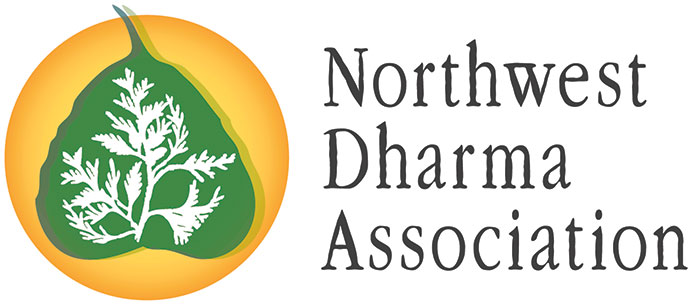Kilung Monastic College Restored as Learning Hub
Written by: Cary Peterson
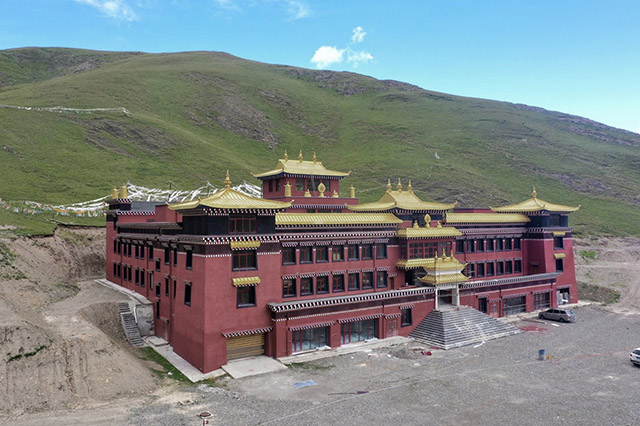
The new Kilung Monastery Shedra is of traditional design, with many modern features.
Photos courtesy of Kilung Foundation
After eight years of determined effort, the lights are back on in the Kilung Monastery Shedra, a monastic college in Tibet.
Support for rebuilding the shedra has come from around the world, but primarily through Kilung Foundation on Whidbey Island, northwest of Seattle. The new Kilung Shedra in Dzachuka, East Tibet, is a modern structure, built with fire and earthquake resistance, designed to withstand the rigors of high-altitude winters. It features a glass-roofed courtyard for passive solar temperature regulation, and specially insulated thick walls, all replacing the wooden structure that burned to the ground in 2016.
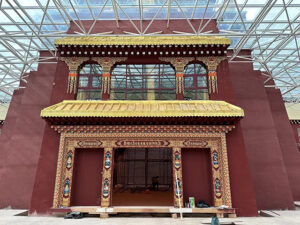
The new lights illuminate the colorful and exquisite details of the traditionally painted walls and columns in the temple, the glistening statues on the altar. Everywhere throughout the shedra and community center, education, spiritual and community life will now return.
The banging and clanking noises of construction are now being replaced by the sounds of studying, practice and learning. These include chanting in the temple, pages being turned in the library, monks teaching and reciting texts, and children shouting their Tibetan lessons. Keyboards are clacking, as nomads learn computer skills.
What an accomplishment at 14,000 feet elevation! In addition to the monastic college, the Kilung Shedra now includes a community center, classrooms for youth programs, and a health clinic.
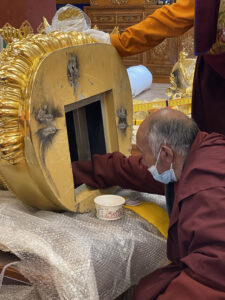
All of this fulfills the aspiration of Dza Kilung Rinpoche, a Tibetan lama who has devoted his life to restoring the monastic education so critical to preserving Tibetan Buddhist spiritual tradition. Rinpoche is also committed to protecting and revitalizing the nomad culture into which he was born.
Historically, Kilung Monastery is one of the most important monastic institutions in the Tibetan Buddhist Nyingma tradition of Longchen Nyingtik. The monastery was built in the 1770s by Jigme Ngotsar Gyatso, the first Kilung Rinpoche, who was one of the four heart sons of Jigme Lingpa. The original monastic college was destroyed during the early 1970s Chinese Cultural Revolution, and then rebuilt by Kilung Rinpoche and supporters in 2003. Therefore it was a terrible moment indeed, when the replacement facility burned down.
With dharma seats in Dzachuka, East Tibet; and Whidbey Island, Washington; Dza Kilung Rinpoche, the fifth Kilung Rinpoche, combines a profound realization of ancient wisdom with a sophisticated grasp of modern technology. He bridges East and West culturally, spiritually and technologically.
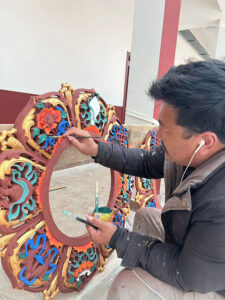
After the 2016 fire he was determined to rebuild the shedra, and to offer more opportunities to his community than before. The Kilung Foundation led a worldwide campaign to raise funds needed for the reconstruction.
The new shedra may use modern construction techniques, but the design and ornamentation are based on traditional Tibetan architecture, and art. The Tibetan paintings and wood carvings are not only beautiful to behold, but the commitment to them helps preserve these artisanal traditions and aesthetics.
The shedra’s classic Nine-Year Monastic Program of study in Buddhist philosophy and practice, is based on the intensive study of traditional texts. Monks accomplishing this rigorous study become the next generation of khenpos (the equivalent of a doctorate degree in Nyingma tradition), scholars and lamas. Now this will be supported by computers, internet connectivity and Wi-Fi, all of it increasing access to scriptures, academic learning and collaboration.
An important outgrowth of this newfound capability is that the Kilung Shedra is now the center of the Longchen Nyingtik Text Preservation project. Over the past several years, Tibetan scholars based out of the Kilung Shedra have been painstakingly comparing and proofreading different editions of the Longchen Nyingtik sungbum (collected works).
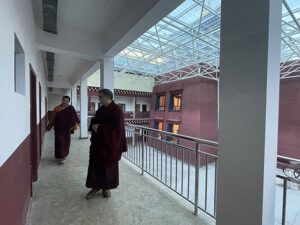
Errors have crept into modern editions of these treasure texts. This work will fix these, and definitively corrected versions of the Tibetan texts will made available digitally, particularly as searchable e-books, greatly expanding access for Tibetan monks and scholars.
The Dzachuka community experienced hardship from the 2016 loss of the shedra, at a time of intense challenges to nomad culture. Children have been particularly hard hit. Native Tibetan language proficiency is being challenged, as children are required to leave their home communities at a very young age, to attend Chinese boarding schools in cities. The re-establishment of the Kilung Youth Programs, which will be teaching not only Tibetan language but also history and handicrafts, will once again be filling this critical gap.
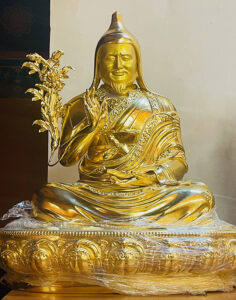
Adult classes will be held at the Kilung Community Center, which will train in Tibetan arts and crafts that are rapidly being lost, such as thangka painting, tailoring, woodcarving, and metalwork. Elder Tibetan artisans will teach these skills to the next generation, an important legacy. In addition, skills needed to further nomad economic development will be taught in computer classes, and in other classes for managing small businesses such as a yogurt or herbal tea enterprises.
Serious public health issues face the nomads in Dzachuka, in particular infection by the hydatid parasite. The health clinic will provide hygiene education, access to vaccinations, and pre- and post-natal maternal support.
The shedra and temple are not only a center of monastic education, but also of worship and celebration. With the rebuilding, traditional pujas and ceremonies so important to the fabric of Tibetan Buddhist life, will now return.
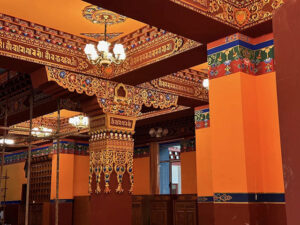
A recent milestone was the consecration of the specially commissioned statues in the temple. In addition to Shakyamuni Buddha, Chenrezig, Guru Rinpoche, Tara and Prajnaparamita, statues specific to the lineage of the Kilung Monastery — Vajrakilaya, Longchen Rabjam, Jigme Lingpa and Jigme Ngotsar Gyatso, the first Kilung Rinpoche —were also installed.
With the shedra now built, and students and community returning, the Kilung Foundation has turned its focus to sustaining the operations of the shedra. In Tibet, donors called jindaks have been essential to sustaining Tibetan Buddhist institutions, and supporting cultural traditions. For example Kilung Nunnery, a short distance from Kilung Monastery, is funded by donors from Thailand and worldwide.
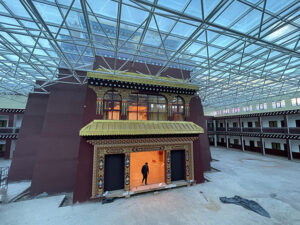
The generosity of jindaks not only helps keep the lights burning brightly, but also funds teachers’ salaries, study materials and books, computer technology, facility maintenance and utilities, meals, health clinic supplies, doctors’ and artisans’ stipends. More information on how to become a jindak of the Kilung Shedra is HERE.
The aspiration to rebuild the Kilung Shedra and Community Center has been fulfilled thanks to the generosity of hundreds of donors throughout the world. Now, due to this amazing structure and the programs it provides, we have a precious opportunity to support and sustain the monks, children and nomads of Dzachuka, and their Tibetan Buddhist spiritual tradition and culture.
Please consider becoming a jindak. Your contribution, large or small, makes a difference and will be greatly appreciated.
Dza Kilung Rinpoche compares the generosity of donors to the flow of a waterfall that continuously waters the roots of buddhadharma, whose branches of wisdom and compassion spread throughout the world, and whose fruits we enjoy.
Cary Peterson is a long-time student of Dza Kilung Rinpoche, and also serves on the board of the Kilung Foundation. She has traveled on pilgrimage to Dzachuka, central and western Tibet, India and Nepal.
